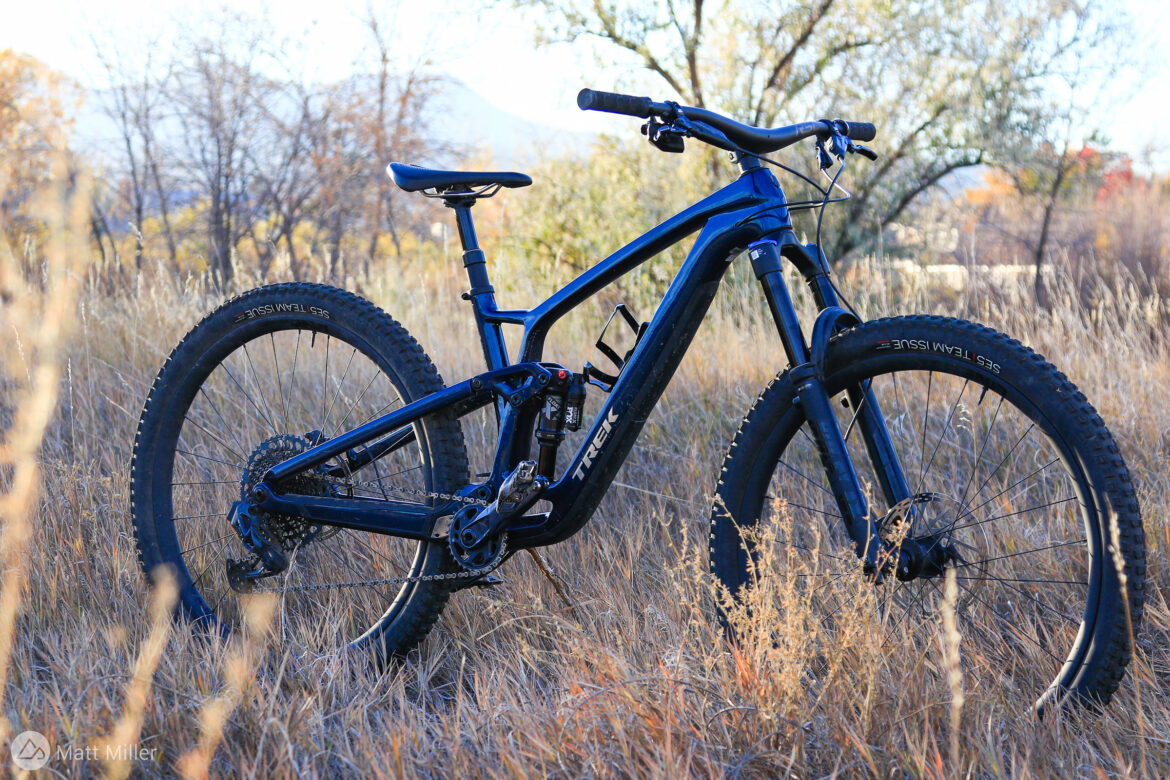
Trek Fuel EX 9.8 GX AXS Gen 6
- Price: $7,700 ($4,499.93 sale)
- Buy from Trek Bikes
The Trek Fuel EX has always had a little more EXtra than the Top Fuel, and as the most recent Top Fuel rooted itself even deeper in the 120mm trail/XC department, Trek thickened the borders between the two.
The sixth generation of the Trek Fuel EX Gen 6 gained 10mm of travel, with 140mm in the rear and a 150mm fork up front. It’s still a 29er, except for size XS and size S has the option to choose between either wheel size.
The geometry has been updated. No surprise there. The Trek Fuel EX really morphs into its new self however through its plethora of added adjustability and frame features. The bike has an adjustable headset (cups sold separately) which adds or subtracts a degree from the head tube angle. The Trek Fuel EX still has a Mino Link flip-chip, giving it a high/low setting, and the suspension has a flip-chip too, giving it a more progressive setting for coil shock riders or hard-charging jumpers.
On the frame and in the frame, there are size-specific chainstays, so the size small frame will have shorter chainstays than the large. Interestingly enough, the chainstays are actually the same size, but Trek lengthens the rear triangle by modifying the front triangle.
The Trek Fuel EX also has a downtube storage box, it now uses a 34.9mm seat tube diameter, and it’s gotten rid of the Knock Block, which never got a lot of fanfare. Home mechanics will appreciate tube-in-tube cable routing and a threaded bottom bracket. Anyone should appreciate the long and burly downtube guard for rock strikes and shuttling.
In the rear triangle, the bike will fit a 2.5″ wide tire on all sizes and it can be run as a mixed-wheel bike with a 160mm fork up front and the Mino Link set to “high.”
With the three head tube angle positions and two Mino Link spots, there are six different geometry options and users can play with the numbers on the Trek Fuel EX web page. The bike ships in neutral and low, so here are the stock numbers for the 18″ size M/L I’ve been riding:
Trek Fuel EX 9.8 GX AXS Gen 6 Key Specs
- Wheel size: 29″
- Seat tube length: 420mm
- Reach: 470mm
- Stack: 616.8mm
- Eff. TT: 607.4mm
- TT length: 594.8mm
- Chainstay length: 440mm
- HTA: 64.5°
- HT length: 100mm
- Eff ST angle: 77.5°
- Actual ST angle: 70.8°
- BB drop: 38mm
- Wheelbase: 1,233mm
- Standover height: 741.8mm
- Trail: 129.2mm
- Fork offset: 44mm
Overall the geometry is pretty middle-of-the-road, except for the head tube angle. Maybe mountain bike geo has accelerated past this bike journalist, but dang, that feels slack for a mid-travel trail bike. Or at least, it looks slack on paper. And the seat tube angle is quite steep for a trail bike, but matches the intent of the slack HTA: steep ups and steep downs. If I had seen these numbers a few years ago, I would have thought “downhill bike!”
But take geometry and multiply it by the rear and front travel and then you have the bike’s true category, whatever it may be.
Otherwise, the reach is moderate and so is the wheelbase. Four sizes use the same 435mm chainstay length, two use 440mm, one uses 445mm, and one uses a 450mm length.
On the trail

I’ve had the Trek Fuel EX 9.8 GX AXS, retailing for $7,700. It’s a sweet build: carbon frame, SRAM GX AXS electronic shifting, Bontrager Line Elite 30 carbon wheels, and SRAM Code R brakes. As for suspension, the bike has a Fox Performance 36 fork with a Grip 1 damper and a Fox Performance Float X shock. They aren’t the most glitzy parts, but it’s all the suspension you really need.
Reviewer profile height: 173cm (5’8″) weight: 75kg (170lb) testing zone: Colorado Front Range
The Fuel EX is a stunning bike, with its no-nonsense looks and subtle branding. The headtube badge is tiny and the Trek branding reserved. It doesn’t make a big deal about itself, and I appreciate that.
I’ll preface the review and mention that I rode the size ML. I am 9/10 a size medium, but this was the closest size Trek had in stock and while I thought it felt great, the medium would have been ideal. I’ll talk about the pros/cons if you’re thinking about sizing up.
Trek Fuel EX climbing performance

Trek’s Fuel EX is built on their Active Braking Pivot (ABP) layout and the pedaling response is snappy and efficient. The bike sits high in its travel and the steep seat tube angle puts the rider in a comfortable climbing position for most types of terrain. I felt cozy whether it was on an easy grade or suffering up a dirt wall.
The carbon hoops surely help the bike keep momentum, but the suspension feels firm under pedal forces too and at around 31lbs, the mid-travel Trek Fuel EX carries its weight gracefully riding a thin line between efficiency and grip. As soon as the trail gets rocky and blown out, the suspension adapts and the traction is plentiful. I didn’t have any issues with grip or slipping in the rear tire.
My only gripe, due to the half-size too large is that I felt a little stretched out in the cockpit on climbs. I couldn’t move up and over objects as nimbly as I wanted or around switchbacks as neatly either. I don’t know how accurate my estimate is either, but I didn’t feel that I was as powerful on climbs because of the slightly larger size.
At 5’8″ I fit on the very tail end of the size M range and smack in the middle of the M/L. If we removed the labels momentarily and I picked a size based completely off the geometry — reach, seat tube length, wheelbase, and standover — I would pick the shorter medium. The numbers suggest the bike would be more than stable and easier to tease power out of and throw around.
Trek Fuel EX descending performance
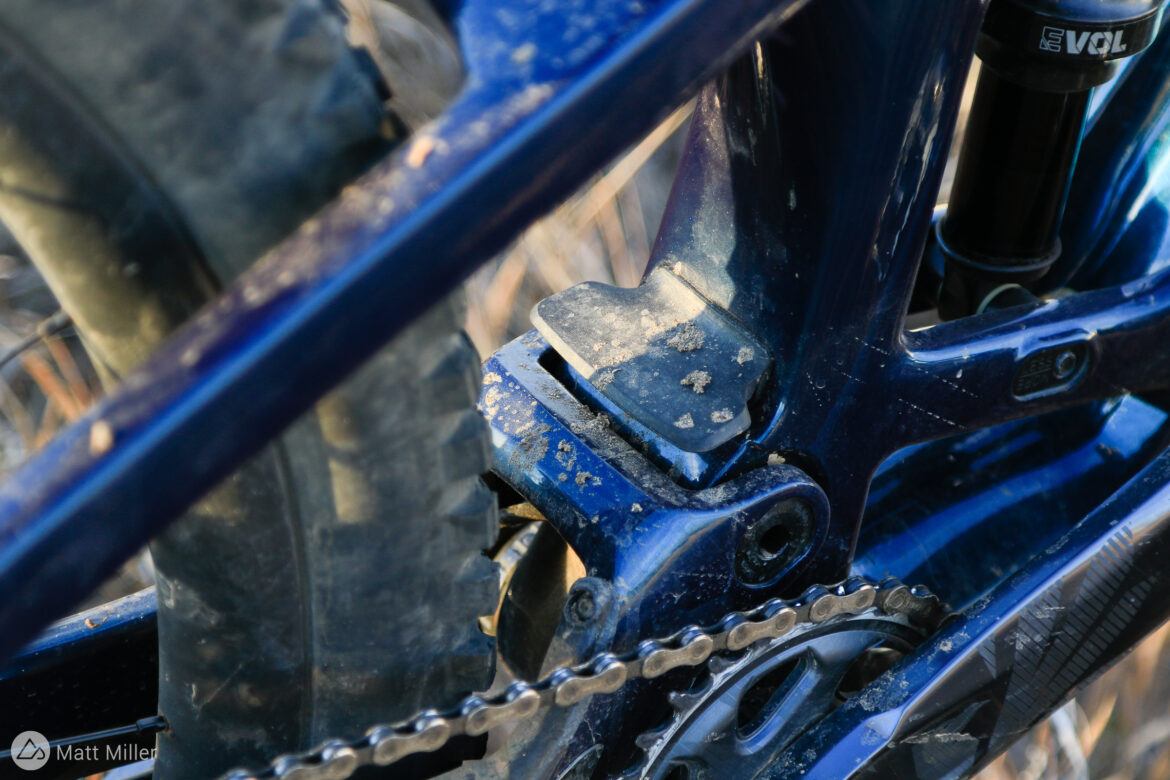
I love mid-travel bikes like the Trek Fuel EX. I don’t believe “quiver-killers” exist, but this bike is as close as it gets to one and the downhill capability of the Fuel EX is just as good as its uphill aptitude.
The Trek Fuel EX frame is stiff, sharp, and agile. Paired with the active rear suspension the bike holds its line like a broad-shouldered football player. The rear swallows up chatter and mid-sized bumps, and is always ready for more.
The benefit of the longer bike, I believe, is that it centered me even more around flat corners and berms and enhanced my confidence. The longer reach and wheelbase also made it very stable on fast and torn-up straightaways.
And even though the Trek Fuel EX screams straight-line speed and confidence with its stiff frame and active suspension, it’s a pleasure to throw in the air and jump over roots and hop up ledges and ride however you like. The more aggressive geometry might seem unnecessary on paper, but it gives the bike an edge on steeper trails without making it a bore on friendlier singletrack.
I experienced one other downside with the upsized bike; on steep and ledgy singletrack, I was hitting the saddle a lot as the rear wheel pitched backward. I didn’t think it would be a problem since the seat tube is still short, but it was another affirmation that if I were to buy one (and I would), I would go with the size I always get.
Component check

The Trek Fuel EX had a lot of Bontrager components. Makes sense, huh? The wheels, tires, and entire cockpit come from from Trek’s powerhouse factory brand.
The Bontrager Line Elite 30 wheels are a lovely set of hoops, stiff and compliant, and offer all the things you could want out of a modern carbon wheelset. They may have proved a little stiff for the SE5 Team Issue tires however. I loved the way the tires grip the dry and loose Colorado dirt, but they felt a little light for the Fuel EX’s capability and I suffered some punctures at a surprisingly low speed.
The Bontrager RSL Integrated handlebars are a ridiculously wide 820mm. Better to have too much and then cut than not enough I suppose, but I wonder; who needs 820mm bars on a trail bike?
The size M and ML come with a 150mm Bontrager Line Elite dropper post and I’d love to have a 170mm.

I think this is the second or third bike I’ve had this year with SRAM GX AXS shifting and I still don’t have complaints. I have yet to need to charge it on any bike. It’s lasted as long as any of the test durations—two to three months.
I also thought the frame touches like the long downtube guard, the downtube storage, and the adjustability throughout the frame were great for those who want to personalize. I was pleased with the bike’s performance in its stock settings and never felt the need to change the angles, nor would I prefer a coil on this bike, but it must put some buyers at ease to be able to tweak if they want.

Pros and cons of the Trek Fuel EX
Pros
- Capable and adaptable mid-travel trail bike
- A lot of adjustability
- Great price points, and alloy version
Cons
- Too many options for adjustability?
Closing thoughts
Trek’s latest generation of the Fuel EX makes it a do-everything trail bike with a very wide bell curve. It may not be a great XC bike or downhill bike, but it’s closer to being able to do everything between those two extremes, better than anything else I’ve ridden this year.
- Price: $7,700 (Trek Fuel 9.8 GX AXS Gen 6 tested)
- Buy from Trek Bikes














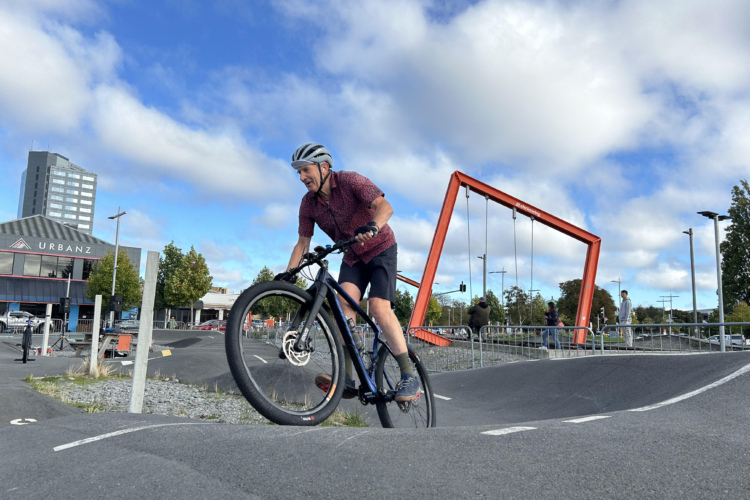
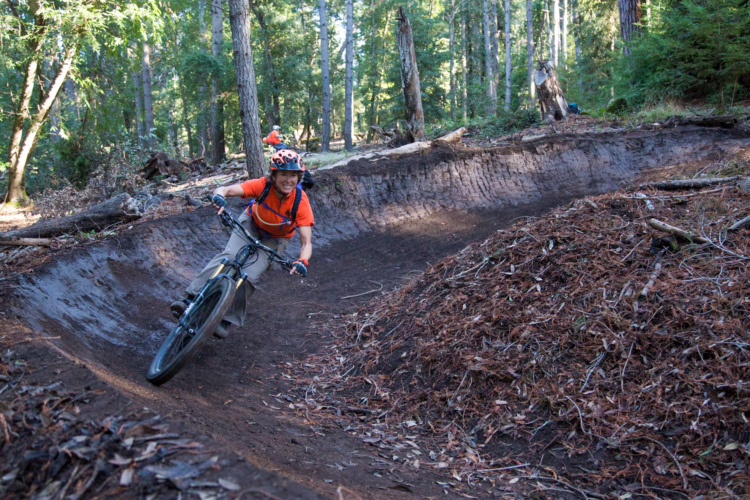
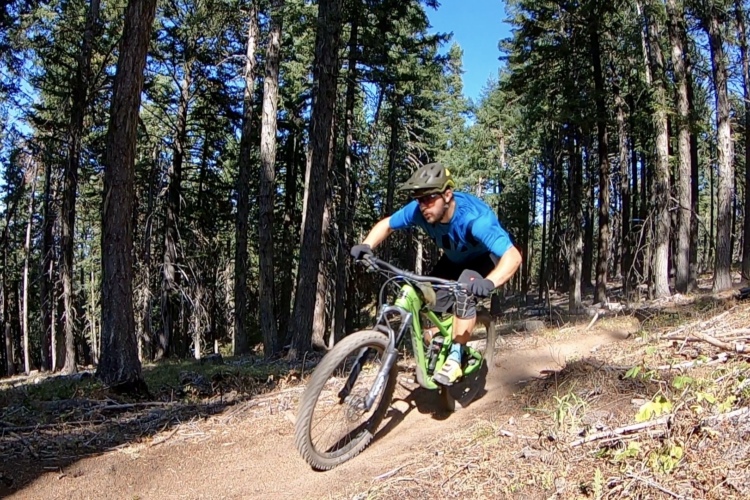

4 Comments
Nov 22, 2022
Nov 22, 2022
Nov 22, 2022
All in all, they have done a nice job with the bike.
Nov 22, 2022